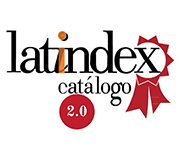Determinants of entrepreneurship among college students in Tamaulipas, Mexico
DOI:
https://doi.org/10.20983/novarua.2022.24.1Keywords:
Companies, Intention, Viability, Multiple correspondence analysis, Multinomial logistic regressionAbstract
The aim of this paper was to identify the determinants of entrepreneurship among college students in Mexico. Entrepreneurial attitudes were analyzed, particularly in three faculties of the Autonomous University of Tamaulipas (Mexico), as well as their impression of the role played by different academic institutions and companies in the promotion of entrepreneurship. Additionally, the companies’ perception on their capability to influence entrepreneurial interest in college students was studied, as well as their opinion on the faculty’s role in the promotion of entrepreneurship.
References
Agresti, A. (2010). Analysis of Ordinal Categorical Data. John Wiley & Sons.
Agudo P., Chaparro, J., Chicharro Y., Hernández, Á.; Iglesias, S., Marín, D., Félix, J. y Portillo, J. (2014). De la idea a la empresa. El difícil camino de las iniciativas empresariales universitarias. Caso de la Universidad Politécnica de Madrid, España. Universidad Politécnica de Madrid.
Ajzen, I. (2011). The theory of planned behaviour: Reactions and reflections. Psychology and Health, 26(9), 1113-1127. DOI: https://doi.org/10.1080/08870446.2011.613995.
Ajzen, I. (1991). The theory of planned behaviour. Organizational Behaviour and Human Decision Processes, 50, 179-211.
Ajzen, I. y Fishbein, M. (1973). Attitudinal and normative variables as predictors of specific behavior. Journal of Personality and Social Psychology, 27(1), 41-57. DOI: https://psycnet.apa.org/doi/10.1037/h0034440.
Azanza, G. (2014). La intención emprendedora en estudiantes universitarios. El caso de la Universidad de Deusto. Boletín de estudios económicos, 69(211), 151-172. Recuperado de: https://www.proquest.com/openview/dccf68d1a0635f8361c63491f55fabde/1?pq-origsite=gscholar&cbl=1536340.
Benavides, M. M., Sánchez, M. I. y Luna, R. (2004). El proceso de aprendizaje para los emprendedores en la situación actual: un análisis cualitativo en el ámbito universitario. Revista de Dirección y Organización, 30, 34-48. Recuperado de: https://dialnet.unirioja.es/servlet/articulo?codigo=876861.
Bergmeir, C. N. y Benítez, J. M. (2012). Neural networks in R using the Stuttgart neural network simulator: RSNNS. American Statistical Association.
Boden, R. y Nucci, A. (2000). On the survival prospects of men’s and women’s new business ventures. Journal of Business Venturing, 15(4), 347-362. DOI: https://doi.org/10.1016/S0883-9026(98)00004-4.
Bosma, N., Jones, K., Autio, E. y Levie, J. (2008). Global Entrepreneurship Monitor: 2007. Executive Report. London Business School. Recuperado de: https://strathprints.strath.ac.uk/16073/.
Casson, M. C. (1982). The entrepreneur: An economic theory. Rowman & Littlefield.
Díaz, L. y Morales, M. (2012). Análisis estadístico de datos multivariados. Universidad Nacional de Colombia. Recuperado de: https://repositorio.unal.edu.co/handle/unal/79916.
Díaz, N., Sarmiento, L., López, J. y Almeida, I. (2011). Aproximación del perfil del emprendedor de la ULPGC. Cátedra Bancaja.
González, J. y Pazmiño, M. (2015). Cálculo e interpretación del Alfa de Cronbach para el caso de validación de la consistencia interna de un cuestionario, con dos posibles escalas tipo Likert. Revista Publicando, 2(1), 62-67. Recuperado de: https://nbnresolving.org/urn:nbn:de:0168-ssoar-423821.
Guerrero, M, Urbano, D., Ramos, A., Ruiz-Navarro, J., Neira, I. y Fernández-Laviada, A. (2016). Observatorio de emprendimiento universitario en España. Edición 2015-2016. Crue Universidades Españolas - Red Emprendia - CISE.
Guzmán C. y Santos C. (2010). El comportamiento emprendedor en los alumnos de la Universidad de Sevilla. Cátedra Bancaja.
Henry, C., Hill, F. y Leitch, C. (2005). Entrepreneurship education and training: ¿can entrepreneurship be taught? Part I. Education+Training, 47(2), 98-111. DOI: https://doi.org/10.1108/00400910510586524.
Kassambara, A. y Mundt, F. (2020). Factoextra: Extract and Visualize the Results of Multivariate Data Analyses. R package version, 1(5), 337-354. Recuperado de: https://cran.r-project.org/package=factoextra.
Kleinbaum, D. G. y Klein, M. (2002). Logistic Regression. A Self-Learning Text. Springer. Recuperado de: https://www.jstor.org/stable/3559816.
Krueger, N. F. y Brazeal, D. V. (1994). Entrepreneurial potential and potential entrepreneurs. Entrepreneurship theory and practice, 18(3), 91-104. DOI: https://doi.org/10.1177/104225879401800307.
Krueger, N. F., Reilly, M., y Carsrud, A. (2000). Competing models of entrepreneurial intentions. Journal of Business Venturing, 15(5), 411-432. DOI: https://doi.org/10.1016/S0883-9026(98)00033-0.
Lê, S., Josse, J. y Husson, F. (2008). FactoMineR: A Package for Multivariate Analysis. Journal of Statistical Software 25(1), 1-18. DOI: https://doi.org/10.18637/jss.v025.i01.
Monroy, L. G. y Rivera, M. A. (2012). Análisis estadístico de datos multivariados. Universidad Nacional de Colombia.
Oviedo, H. C. y Campo-Arias, A. (2005). Aproximación al uso del coeficiente alfa de Cronbach. Revista colombiana de psiquiatría, 34(4), 572‐580. Recuperado de: http://www.scielo.org.co/scielo.php?script=sci_arttext&pid=S0034-74502005000400009.
Pons, E. T., Torras, M. M., y Hernández, X. F. (2015). Del modelo del evento emprendedor al modelo sistémico de emprendimiento. 3c Empresa: investigación y pensamiento crítico, 4(2), 124-135. Recuperado de: https://dialnet.unirioja.es/servlet/articulo?codigo=5093286.
Quintero, C. (2007) Generación de competencias en jóvenes emprendedores. UNAB. Recuperado de: http://www.usmp.edu.pe/facarrhh/primer_congreso_ippeu_boletin/ppts/Carlos_Quinteros.pdf.
RC Team (2021). R: A Language and Environment for Statistical Computing. R Foundation for Statistical Computing. Recuperado de: https://www.yumpu.com/en/document/view/6853895/r-a-language-and-environment-for-statistical-computing.
Sánchez, S., Santos, L., Saco, F. y Fuentes, F. (2011). Actitud emprendedora y género en el alumnado de la Universidad de Córdoba: informe del estudio. Servicio de Publicaciones de la Universidad de Córdoba.
Shapero, A (1982). Social dimensions of entrepreneurship. En Kent C, Sexton D. y Vesper, K. (Eds.), The encyclopedia of entrepreneurship. Prentice Hall.
Thursby, M., Fuller, A. W., y Thursby, J. (2009). An integrated approach to educating professionals for careers in innovation. Academy of Management Learning & Education, 8(3), 389-405. DOI: https://doi.org/10.5465/amle.8.3.zqr389.
Ulrich, D. (1998). A new mandate for human resources. Harvard Business Review, 76(1), 124-134.
Wickham, H. (2016). ggplot2: elegant graphics for data analysis. Springer.
Downloads
Published
Issue
Section
License
Copyright (c) 2022 José Angel Sevilla Morales, Francisco García Fernández, Martín Alfredo Legarreta-González

This work is licensed under a Creative Commons Attribution-NonCommercial-ShareAlike 4.0 International License.
All contents of the electronic edition of the journal are distributed under a license and distribution "Creative Commons Attribution-Noncommercial-ShareAlike 4.0 International" (CC-BY-NC-SA). You can see from here the informative version of the license.
Those authors/publications as having this journal agree to the following terms:
a) Is allowed and recommends authors / as disseminate their work via the Internet (p. eg .: institutional telematic files or on their website), which can produce interesting exchanges and increase appointments of the published work. (See The Effect of Open Access).












